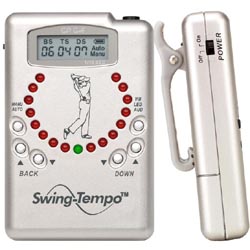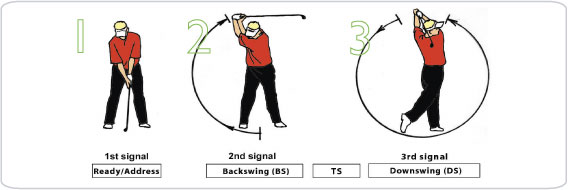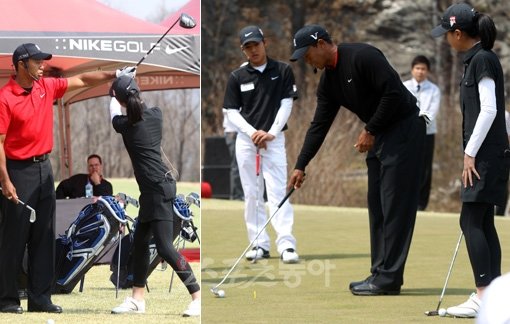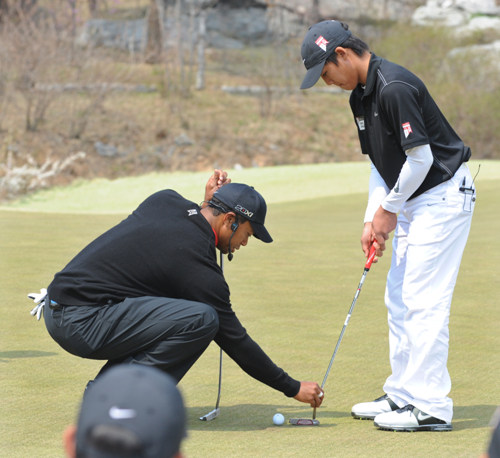Aim & Contact
It is important to properly aim the putter on the intended line and to consistently strike the ball in the center of the putter face. Use aids like face impact paper to determine where the ball strikes the face. Also, use a line indicator for the intended line and set-up with the putter square to that line.
Acceleration
Acceleration means the speed of the putter head constantly increases at a steady rate from the start of the forward stroke through impact. This is an important stroke mechanic but usually is too subtle to be noticed by the golfer's eye.
Some golfers have excessive acceleration at impact. Some have a tendency to decelerate at impact. Constant acceleration is ideal to control ball speed and distance.
Acceleration can be attributed to the length of the stroke and the amount of stroke time. The more consistent a golfer is with these mechanics the more consistently they will accelerate the putter head through impact.
Putter Head Speed
The putter head speed at impact determines how far the ball will roll. Putter head speed is a direct result of acceleration mechanics. This is a learned mechanic for judging the distance for each putt.
Stroke Length, Time & Tempo

These are crucial mechanics for developing a consistent stroke. Stroke lengths will vary with different lengths of putts but the stroke time should remain about the same for putts of all lengths.
Putting Stroke Mechanic DataStroke times are the elapsed times for the backstroke and the forward stroke to impact. The forward stroke to impact should be about one half the time of the backstroke. Stroke time will vary some from player to player but the time for different length putts should vary no more than a fraction of a second for each player.
Therefore, stroke tempo should be about the same on all lengths of putts. Stroke Tempo is the ratio of the backstroke time divided by the forward stroke to impact time.
Natural Putters
There are natural putters but most golfers have to learn stroke mechanics. Even the natural putters have to practice sound putting stroke mechanics or they will not be so natural. Putting is simple physics that requires imparting a roll on the ball at the proper pace on the intended line. Sounds easy right?
Even the best players in the world playing on the best putting surfaces don't make all their putts. Typically, the year's best putter on the PGA Tour averages a little more then 1.7 putts per green hit in regulation and usually the average is about 28 putts per round. That is not lights out when you consider they average about 14 greens in regulation per round. But on a given week when they get in that "zone" and average 25 putts per round, they more then likely win the tournament.
Sound putting mechanics will improve putting for all golfers. Practicing putting mechanics will lower the number of putts per round and improve consistency.
[Source]
http://www.clubrepairnews.com/techreport/tech-putting-stroke.htm





















